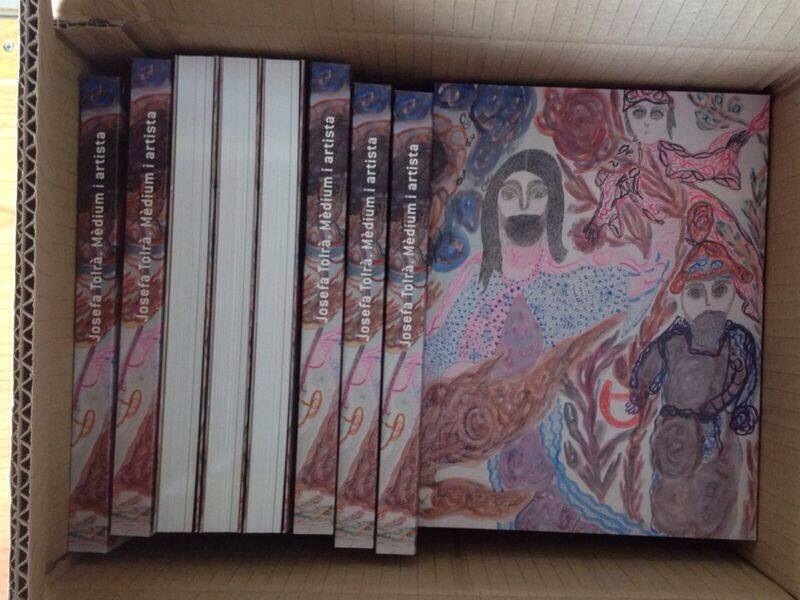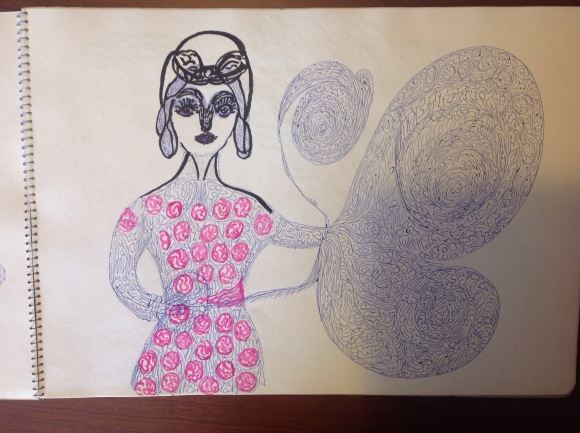Josefa Tolrà
Médium y artista (Cabrils, Barcelona 1880-1959)
Archivos Mensuales: noviembre 2014
Josefa Tolrà : un fluide vital
Mon petit cœur a fait boum boum devant la ligne serpentine des dessins que j’ai aperçus du coin de l’œil. Mais dehors mon chéri s’impatientait de tailler la route du grand ouest. Je me suis dit que ce serait bien le diable si je ne retrouvais pas les œuvres de cette créatrice médiumnique sur le Net. Aussi à peine mes valises posées dans mon gîte rural sous le vent, à peine mon wifi installé, je me suis offert une dérive virtuelle à la recherche de Josefa Tolrà.
(…) Animula Vagula
http://animulavagula.hautetfort.com/archive/2014/06/21/josefa-tolra-un-fluide-vital-5395840.html
LIVING IN INSTERSTITIAL SPACES. ART AND OTHER ASPECTS
Josefa Tolrá produced her works in a state of mediumistic trance state in the 1940s and 1950s in rural post-war Spain, at the time when the CIA was developing mind-controlling programmes to alter the behaviour of individuals after the Second World War. By experimenting on depriving the senses, stimulating the brain, subliminal projection and also the use of chemical substances to expand the consciousness, they tried to achieve alterations in behaviour and control it and in the 1950s these experiments included hypnotisers and telepaths. The truth is that, besides the ideological, political or military reasons which drove these experiments, the need to study the expansive possibilities of the mind was not new, and the CIA was simply following an earlier tradition which appeared in the second half of the 19th century. Altering human behaviour using extra sensorial aspects has been stigmatised throughout history, and paranormal visions and actions, which have become popularly known as hallucinations, have been regarded by medicine as erroneous, faulty or deceitful actions. Treated as pathologies of the nervous system and related to hysteria or states of alienation, they were regarded different from the healthy spirit. The modern project that appeared in the industrial society, marked by a positivism that hailed rational aspects as something that could be proved or objectivised, marginalised this kind of phenomena. However, hallucinatory experiences soon began to gain interest as a kind of dissidence against the restrictive authority of Reason. Its potential subversiveness became appealing not only because of it contributing to alternative methods of producing knowledge, but also to forms of creative experimentation, and even to science which had initially ignored it. Philosophical, theosophical, scientific and artistic studies focused on the non-visible aspects, and would converge on numerous occasions despite their apparently unconnected aspects, in a gradual interest towards occultism, spiritism, and forms of trance that enabled one to enter other states of consciousness such as telepathy, hypnosis or mental suggestion.It is in the debate between philosophy, phenomenology and neuro-cognitive sciences where new processes of subjectivation appear concerning the epistemological aspects, perception, aesthetics and intersubjectivity.
(…) Teresa Grandas





